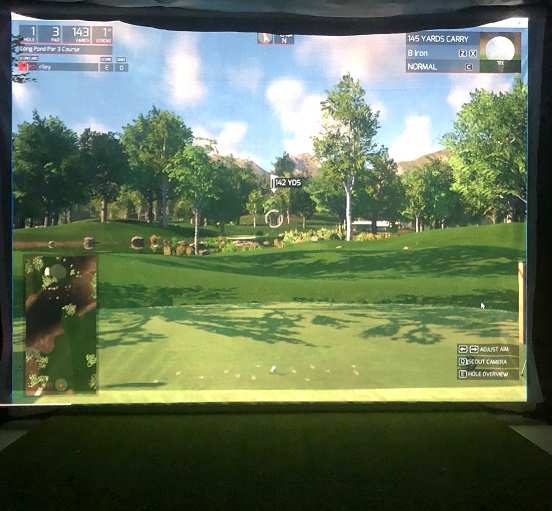
Virtual golf simulators are a great way to work on your golf swing all year round. The projection screens used by these systems need to take a lot of abuse. Low quality simulator screens may be cheap to buy but they don’t end up lasting very long. High quality golf simulator impact screens are normally made of Kevlar and cost thousands of dollars.
At Heavy Duty Tarps we offer extremely cost-effective screens that can be made to your exact specifications. For this application we have four different materials from which to choose. Visit this page to learn more about our golf mesh material.
Below you will find information about sizing and installing your custom golf simulator screens. Be sure to read this page completely before placing your order to make sure you choose the material that best meets your requirements.
Before ordering your screen, make sure you have enough room to accommodate a simulator screen. In order to maintain the integrity of your screen, the golfer should be at least 10 feet away the surface when striking the ball.
Check out this audio podcast featuring our golf mesh products.
HD Golf Mesh (3-Ply)
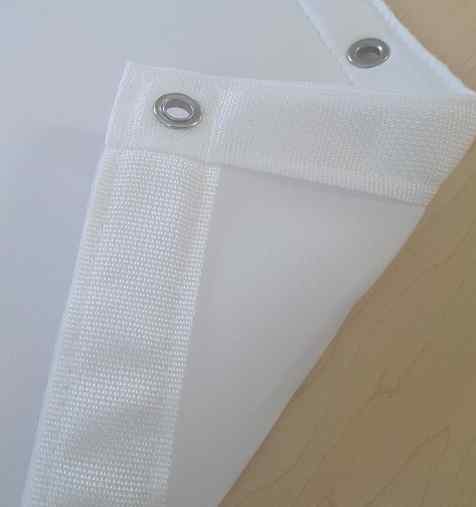 Our 3-Ply HD Golf Screen is for discerning golfers who want the very best image quality without needing to add a block-out background behind the screen. This material features a "foam" interior layer which facilitates noise reduction and quick recovery while eliminating transparency that undermines picture quality to provide a truly immersive play experience. This material also tends to be the most durable since the three layers of fabric help to absorb the ball impact. With all of our materials always be sure to use clean, mark free, balls to prevent dirt or grass stains from transferring onto the screen and imperfections in the ball from catching on the material. You should also make sure the heads of your golf clubs are completely clean so that dirt from the clubs does not transfer onto the balls.
Our 3-Ply HD Golf Screen is for discerning golfers who want the very best image quality without needing to add a block-out background behind the screen. This material features a "foam" interior layer which facilitates noise reduction and quick recovery while eliminating transparency that undermines picture quality to provide a truly immersive play experience. This material also tends to be the most durable since the three layers of fabric help to absorb the ball impact. With all of our materials always be sure to use clean, mark free, balls to prevent dirt or grass stains from transferring onto the screen and imperfections in the ball from catching on the material. You should also make sure the heads of your golf clubs are completely clean so that dirt from the clubs does not transfer onto the balls.
HD Golf Mesh
This is our best single-ply golf screen material. It is extremely durable and offers the second highest image quality, next to our 3-Ply material. Although the picture quality of this screen will be very good on its own, it can be enhanced by hanging a black background behind the screen (as described below).
Golf Mesh
Our standard Golf Mesh is made from the same polyester yarn as our HD Golf Material but the weave is not quite as tight so the image quality, while good, won't be quite as crisp as the HD Golf Mesh material. Again, the image quality can be enhanced by adding a black material behind the screen.
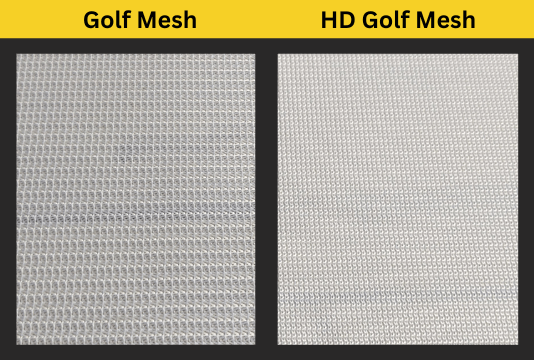 This image shows a comparison of the standard Golf Mesh and the HD Golf Mesh. These screen samples are sitting on a table with some dark wood grain so that you can see that the HD Golf Mesh blocks out more of the dark areas. You can also see that the HD Golf Mesh offers a smoother surface.
This image shows a comparison of the standard Golf Mesh and the HD Golf Mesh. These screen samples are sitting on a table with some dark wood grain so that you can see that the HD Golf Mesh blocks out more of the dark areas. You can also see that the HD Golf Mesh offers a smoother surface.
Sawdust Mesh
If you don't plan to project onto the screen, Sawdust Mesh is a more economical alternative to the Golf Mesh products. You can still project onto the Sawdust Mesh, however the picture quality won't be as good. This material comes in 115" widths.
Here we show a comparison of the Golf Mesh vs the Sawdust Mesh, you can see that the Golf Mesh has a tighter weave than the Sawdust Mesh.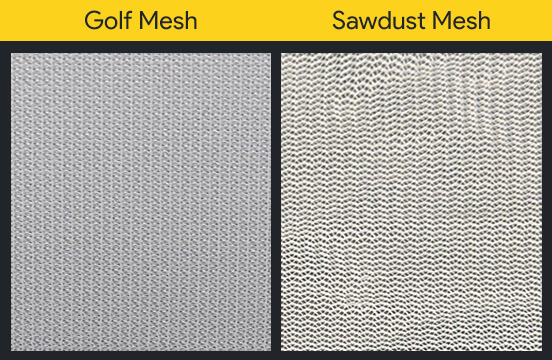
All four materials have similar characteristics in terms of their use as impact screens with high durability, excellent sound absorption, minimal bounce-back and quick recovery.
We generally recommend adding a pocket (channel) to the top and bottom so that you can hang the screen on a pole suspended on each end (and in the middle for longer spans). This creates a nice level surface to prevent drooping and sagging. The lower pocket allows you to insert a lightweight pole or similar item to add a bit of tension to the screen. This setup is preferred to fastening the screen on all sides since you want the screen to have some "give" so that the balls don't break through the tarp or bounce back. If the tarp is too tight it has to take all the force of the balls and may not last as long. We have had a couple of people report that they were able to drive a ball through the golf mesh. We believe these incidents could have been prevented by having less tension on the screens.
The 3-Ply HD Golf Mesh is opaque and provides a great projection surface on its own. Since the single ply mesh materials have tiny holes throughout the surface you should avoid having the image being projected off whatever is behind the screen. For this reason, we recommend placing the screen in front of a black wall or draping dark material behind the screen. This is less important for the HD Golf Mesh but recommended for the standard Golf Mesh and Sawdust mesh since this will ensure a better picture quality. 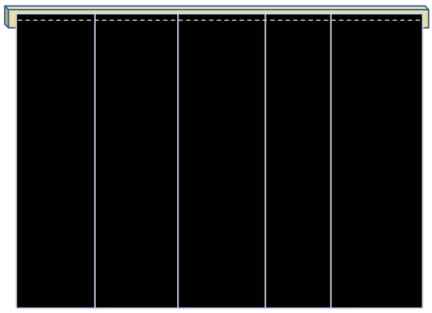
Rolls of black felt roof underlay can be purchased at Home Depot or other building suppliers for about $30. These can be cut into strips which are stapled to a 2x4 running behind your screen as depicted here. This is a very cost-effective way to improve the picture quality.
When sizing your screen, be sure to consider the aspect ratio of your projector. In most cases, the height of the screen will be constrained by your ceiling height. Let's say you have 8' ceilings. If the aspect-ratio of your projector is 16:9 this means that an 8' tall image would be 14.222 feet (8/9*16) wide. In such a case you would generally want to make the screen 8' x 14' 3" so that the projected image completely fills the screen.
Keep in mind that the maximum seamless height is 120" for the 3-Ply HD Golf Mesh, 116" for the HD and standard Golf Mesh and 111" for the Sawdust Mesh assuming you are using grommets top and bottom. If you want pockets instead of grommets, the maximum seamless height will depend on the pocket sizes. In addition to the pocket itself, we need about an inch of material to sew the pocket. For example, if you want a 4" pocket on the top and bottom, we can make a Golf Mesh screen up to 110" tall (120" - (2 x 4") - 2") and a Sawdust Mesh screen up to 105". There is no restriction on the length in the other dimension. Note also that the pocket sizes reflect flattened pockets, so a 4" pocket could accommodate a pipe up to about 2" in diameter.
To order this online, use our golf simulator screen order form and enter your required dimensions, pocket sizes and grommet configuration.
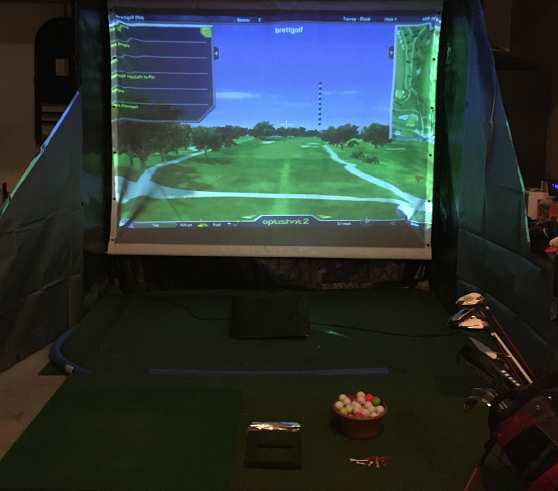 In addition to the screen itself, we can also make side panels like the ones shown here or even full cages to protect stray balls from damaging your walls or breaking your valuables. Usually these panels are made using our 90% block premium mesh.
In addition to the screen itself, we can also make side panels like the ones shown here or even full cages to protect stray balls from damaging your walls or breaking your valuables. Usually these panels are made using our 90% block premium mesh.
If you are already using one of our tarps as an indoor golf simulator screen please send us a note and we will post it on our blog. A nice customer sent us this video of himself using one of our replacement golf simulator screens.
If you find that your screen has become soiled or shows scuff marks, these marks can be lessened by using a Mr. Clean Magic Eraser. Scrub in the direction of the groves on the screen. Never use a bleach based cleaner on your screen since the bleach will weaken the material.

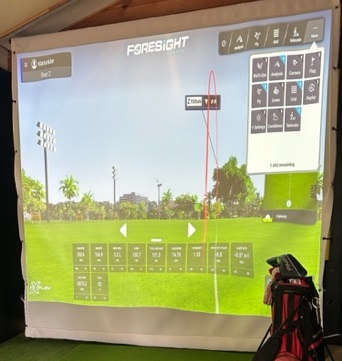 Please share with the team that made my tarp…Love it! I have been sharing your name with everyone😀..
Please share with the team that made my tarp…Love it! I have been sharing your name with everyone😀..

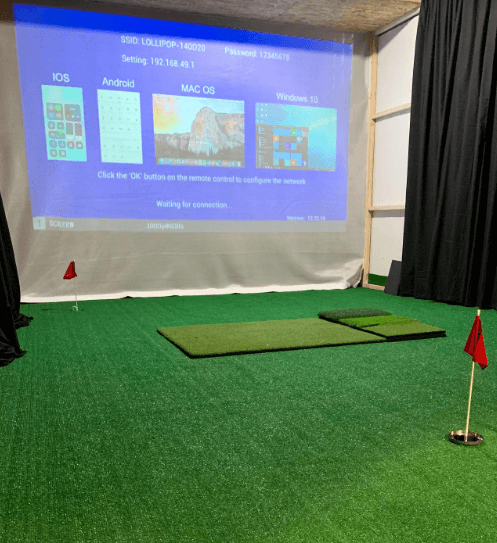

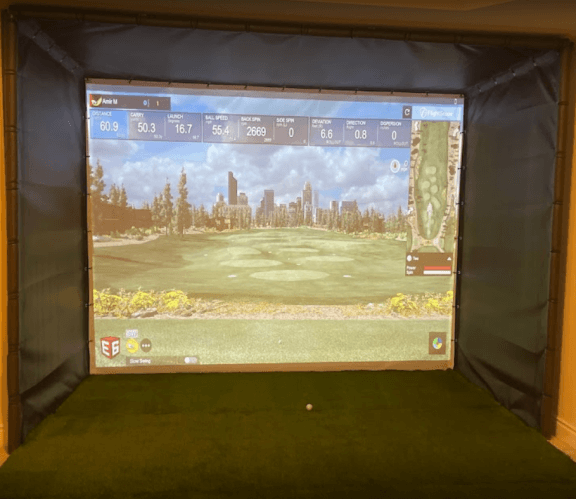 Editor's Note
Editor's Note




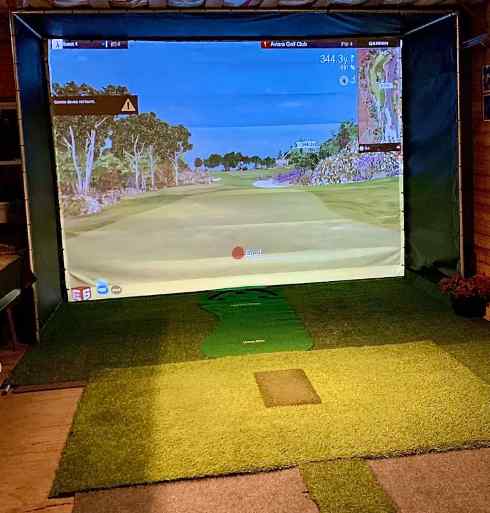 Thanks for the HD Golf Screen and Mesh. It worked out great. Here is a pic for you to use.
Thanks for the HD Golf Screen and Mesh. It worked out great. Here is a pic for you to use.




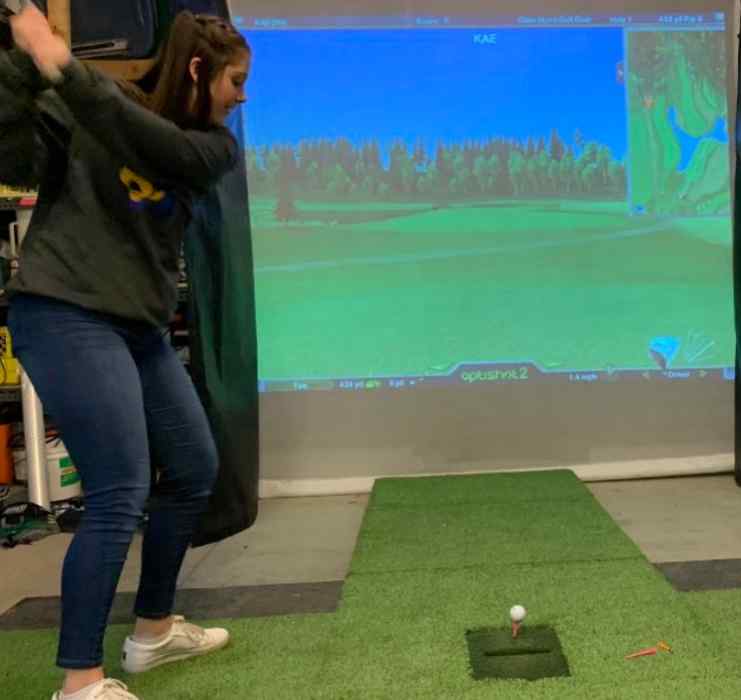 Awesome customer service. Very knowledgeable, and helpful. Great product! We’ve been using the enclosure screen and love it. Now we don’t have balls bouncing all over the garage. Here is a picture of our finished product. Thanks again for all the support and help.
Awesome customer service. Very knowledgeable, and helpful. Great product! We’ve been using the enclosure screen and love it. Now we don’t have balls bouncing all over the garage. Here is a picture of our finished product. Thanks again for all the support and help.Here is another photo sent in by Trevor of Watrous, Saskatchewan 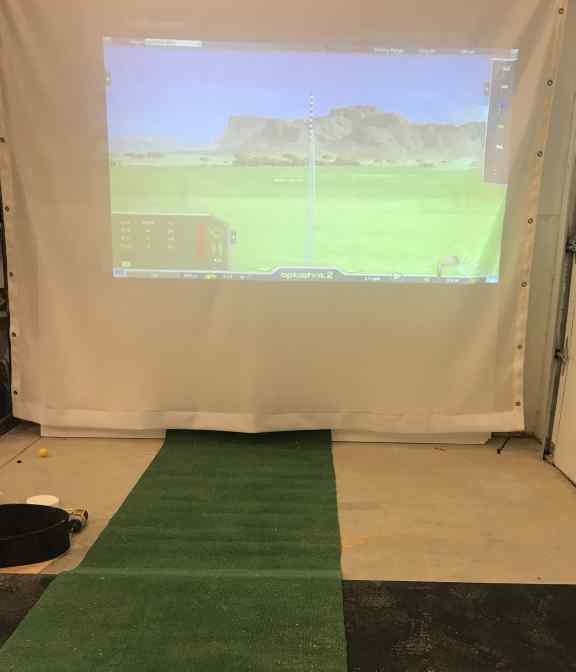 . Trevor writes "Love the tarp. It was exactly what we requested, and is working flawlessly as the impact screen for our golf simulator."
. Trevor writes "Love the tarp. It was exactly what we requested, and is working flawlessly as the impact screen for our golf simulator."
In addition to DIY golf impact screens, our tarps are often used as inexpensive movie projection screens.